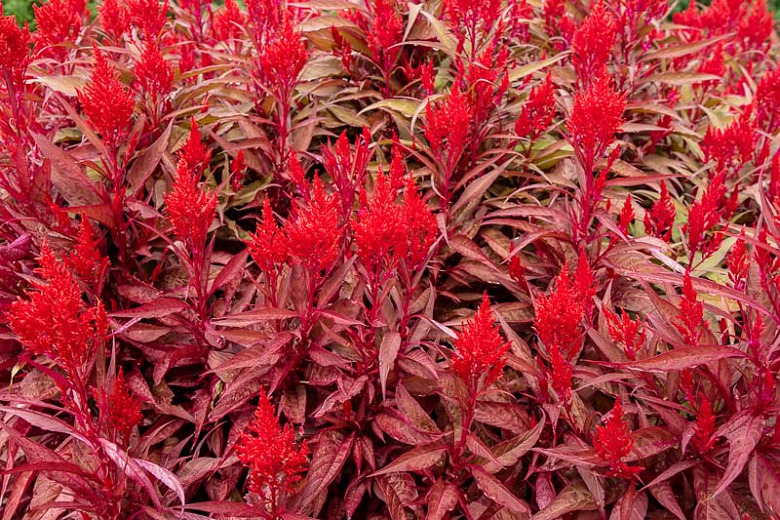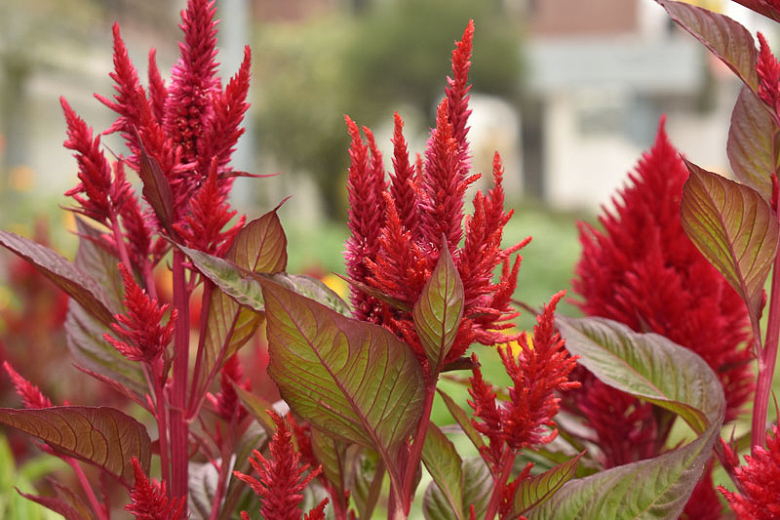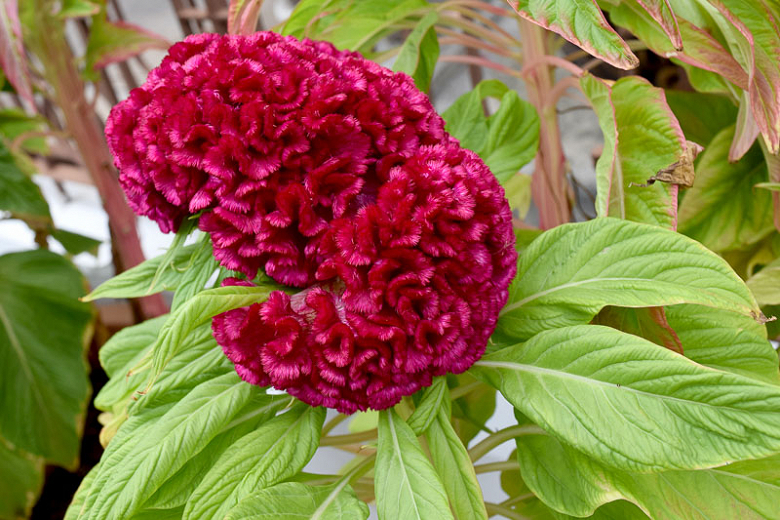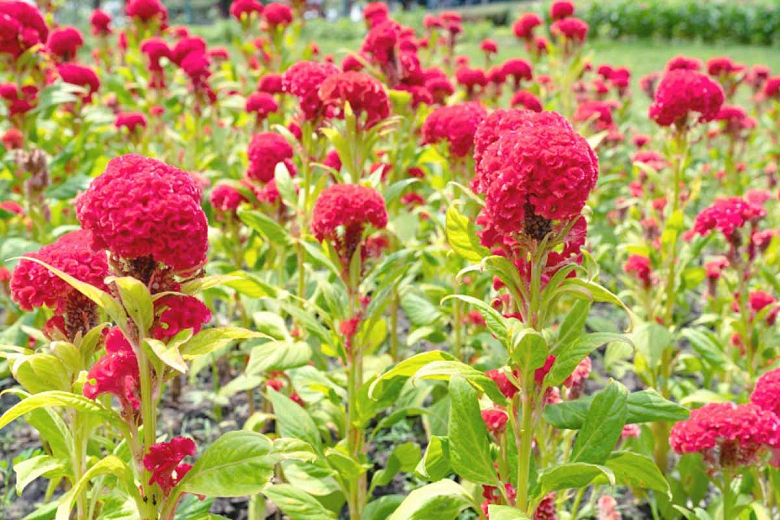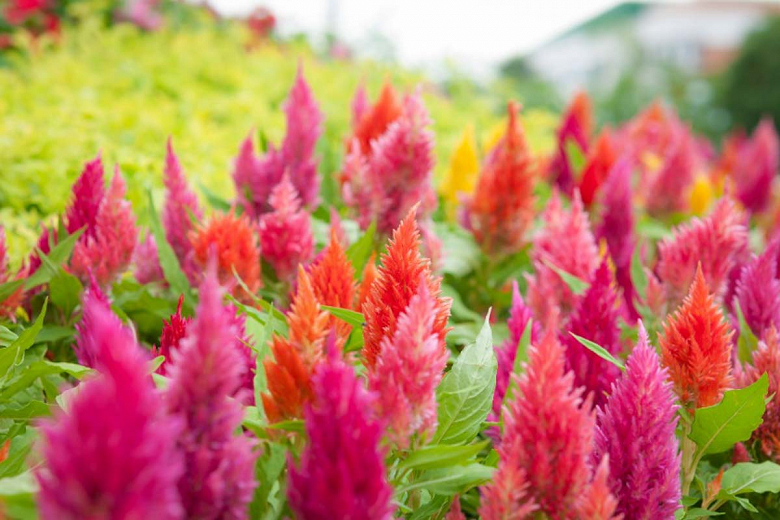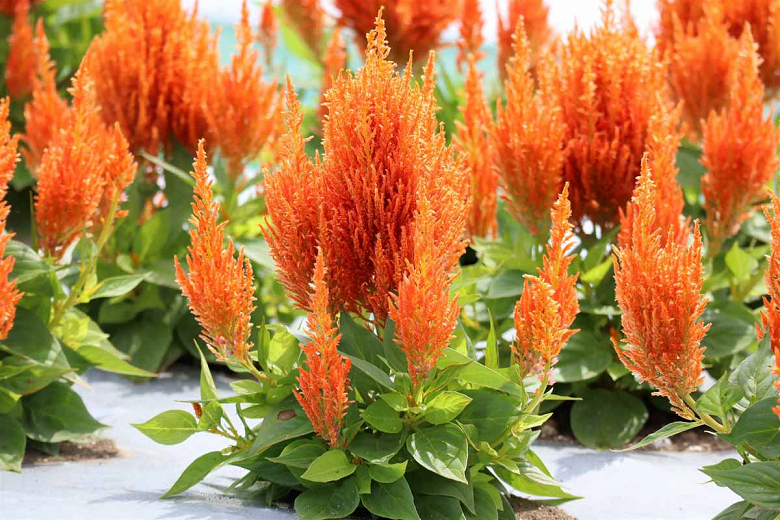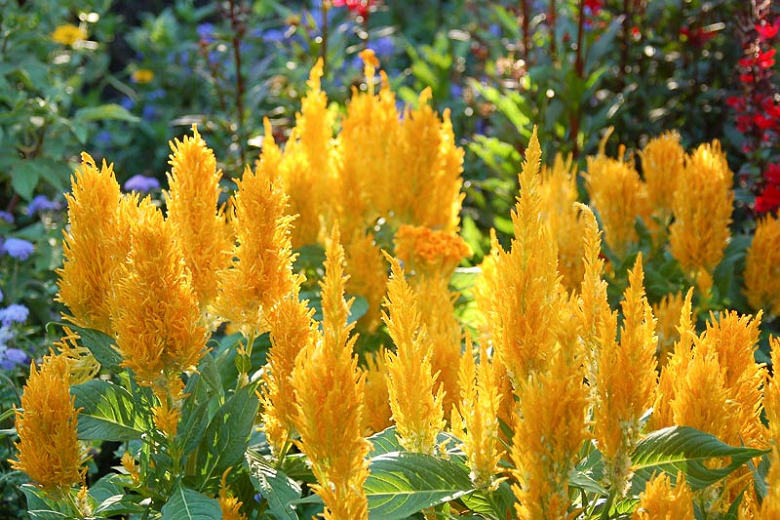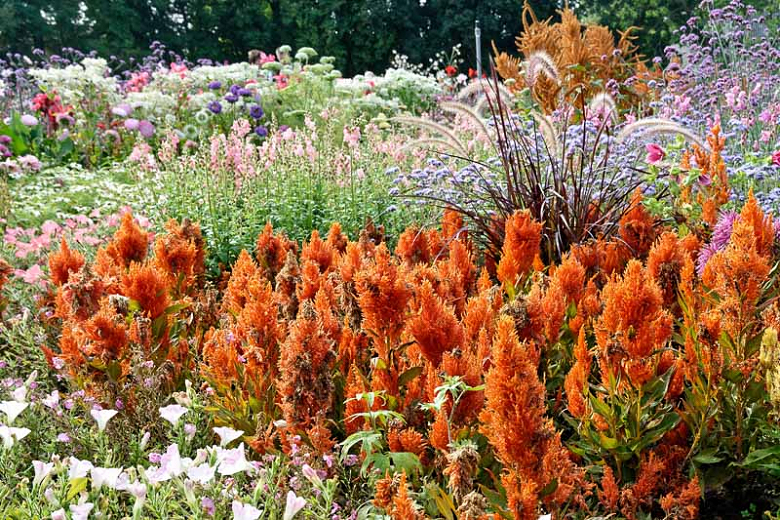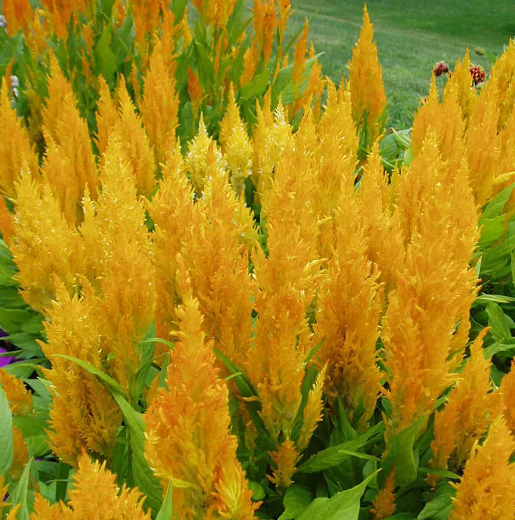Celosia argentea var. cristata (Plumosa Group) Dragons Breath
Celosia argentea var. cristata (Plumosa Group) ‘Dragon’s Breath’ is an upright, bushy annual noted for its extra-large, bright-red, plume-like flowers, 10 in. long (25 cm), and unusual leaves. Blooming throughout summer into fall, the erect feathery spikes rise on stems clad with large, spear-shaped dark-red leaves.
Celosia argentea var. cristata (Plumosa Group) 'Dragon's Breath' is an upright, bushy annual noted for its extra-large, bright-red, plume-like flowers, 10 in. long (25 cm), and unusual leaves. Blooming throughout summer into fall, the erect feathery spikes rise on stems clad with large, spear-shaped dark-red leaves. This tropical plant is effective as a bedding plant or in containers. It makes wonderful fresh cut flowers and is terrific in dried arrangements.
- Recipient of the prestigious Award of Garden Merit of the Royal Horticultural Society.
- Grows up to 24 in. tall (60 cm) and 16 in. wide (40 cm).
- Performs best in full sun or light shade in humus-rich, moderately fertile, consistently moist, well-drained soils. Thrives in heat and humidity and tolerates dry soils and drought once established. Plant in a location sheltered from strong winds.
- A great choice for beds and borders, edging, containers, cottage gardens, and cutting gardens. Excellent for fresh or dried flower arrangements and bouquets.
- While Celosia is mostly grown for its flowers, Celosia is edible. Leaves, tender stems, and young flower spikes can be eaten boiled, or cooked in sauce or stew with other ingredients. The leaves are a nutritious addition to the vegetable garden. They contain high levels of beta-carotene and folic acid.
- Low maintenance, add this charming annual plant to the landscape and you will be rewarded with bees, butterflies, and other pollinators, beneficial insects, and songbirds.
- In warm winter climates, such as USDA hardiness zones 10 and 11, Cockscomb can also be grown as a perennial.
- Deadhead spent flowers to prolong bloom.
- Harvest flowers when they are fully developed and before they begin to make seed.
- Propagate by seed. Sow seeds outdoors after all danger of frost has passed or indoors 6-8 weeks prior to the last spring frost date.
- No serious pest or disease issues. Keep an eye out for glasshouse red spider mites, glasshouse whitefly, and aphids when grown under glass. Susceptible to root rot. Crowding, rain, and high humidity will cause flowers to rot. This plant is frequently damaged by deer.
- Celosia argentea is native to Tropical Africa.
Requirements
| Hardiness | 2 – 11 |
|---|---|
| Heat Zones | 2 – 9 |
| Climate Zones | 1, 1A, 1B, 2, 2A, 2B, 3, 3A, 3B, 4, 5, 6, 7, 8, 9, 10, 11, 12, 13, 14, 15, 16, 17, 18, 19, 20, 21, 22, 23, 24, H1, H2 |
| Plant Type | Annuals, Perennials |
| Plant Family | Celosia |
| Exposure | Full Sun |
| Season of Interest | Summer (Early,Mid,Late)Fall |
| Height | 1' – 2' (30cm – 60cm) |
| Spread | 1' – 2' (30cm – 60cm) |
| Spacing | 16″ (40cm) |
| Water Needs | Average |
| Maintenance | Low |
| Soil Type | Chalk, Loam, Sand |
| Soil pH | Acid, Alkaline, Neutral |
| Soil Drainage | Moist but Well-Drained, Well-Drained |
| Characteristics | Dried Arrangements, Cut Flowers, Plant of Merit, Showy |
| Tolerance | Drought, Dry Soil |
| Attracts | Bees, Butterflies |
| Garden Uses | Beds and Borders, Edging, Patio and Containers |
| Garden Styles | Cutting Garden, Informal and Cottage |
